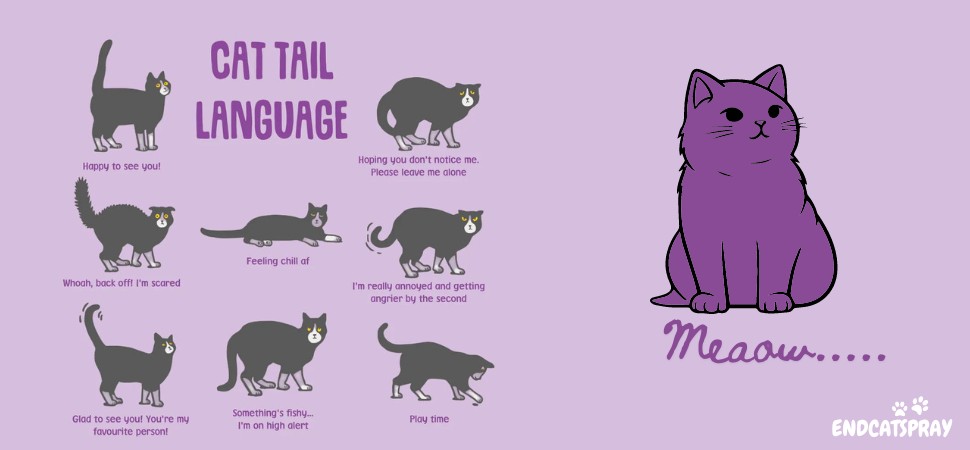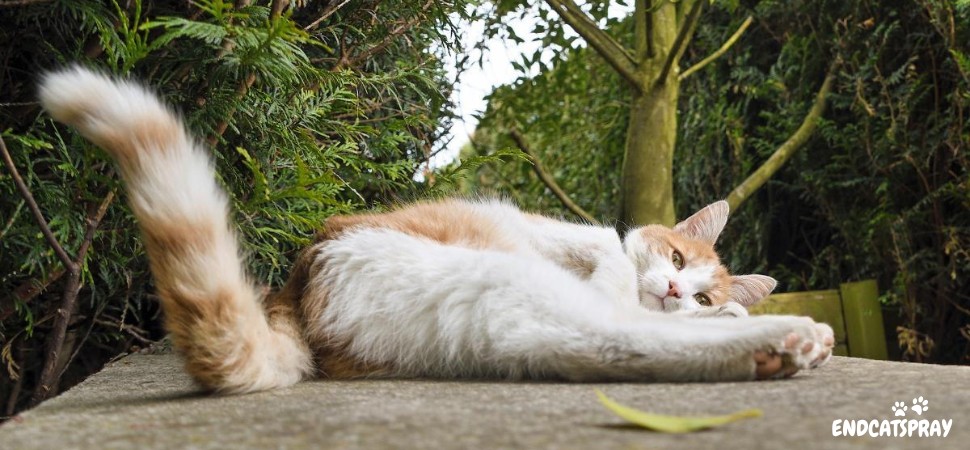The Cat’s Tail Language can tell you enough about what she is thinking. Tails are the best way to determine a cat’s mood. Keenly watch your feline’s behavior for some time, then you will understand what she is trying to convey. Also, it is usually said that cats are very communicative animals, and their tails predict a lot about their emotions.
In addition, observing your cat’s body language will assist you in identifying how your feline feels about specific interactions. Even a feline biting her tail can be trying to explain something to you. It likewise permits you to determine the environments or situations that cause fear or make her happy. Understanding her tail language can assist you in identifying pain and illness more quickly.
Key Takeaways of What Does Your Cat’s Tail Language Tell You
- Tails are the best way to determine a cat’s mood.
- If the cat’s tail is held high, it indicates confidence and satisfaction.
- A straight-down tail can show aggression or stress.
- If the cat’s tail is curved, it indicates a playful mood.
- A cat’s tail that sways gradually means she is attentive to an object.
- The thrashing tail movements show they are annoyed, irritated, or mad.
What Does a Tail Position Indicate about a Cat’s Tail Language?
Your cat usually shows different tail positions. Every position indicates a different story about her emotions. It is essential to know these positions to understand your cat’s feelings.
Let’s explore the different tail positions of a cat along with their meanings below:
If a Cat’s Tail is High:
Whenever you notice that your cat’s tail is held high above while she is moving around its area, it shows confidence and satisfaction.
A high tail demonstrates pleasure and a willingness to be sociable. Also, observe the edge of a straight tail. A small jet signals a specifically contented moment.
If a Cat’s Tail is Low:
In contrast to the high position, a straight-down tail can tell about a Cat’s Tail Language. It can indicate aggression or stress. A low-positioned tail shows the severe mood of a feline. But remember that specific breeds, like Persians, keep their tails straight down for no particular reason.
If a Cat’s Tail is Question Mark:
You sometimes see that your cat’s tail may appear curved or like a question mark (curling at the end but standing upright). This language shows that your feline is playful and friendly. This is her request to play with your pet whenever you observe this.
If a Cat’s Tail is Puffed Up:
A tail looking like a pipe cleaner demonstrates a very stressed, agitated, or scared cat trying to appear huge to defend against danger.
If a Cat’s Tail is Swishing Motion:
A cat’s tail that sways gradually from one side to another typically means she is attentive to an item. You may notice this tail position exactly when she jumps on a toy or a piece of cat food falling outside the container.
If a Cat’s Tail is Wrapped Around her Body:
When your feline is lying down or sitting with her tail wrapped around the body, it shows that she is terrified, self-protective, in discomfort, or feeling ill. When you perceive this, do not interact with her and guarantee the environment is free of all stressors.
Furthermore, if she frequently bends with her tail curled firmly around her body for several days, then an assessment by your vet is necessary to check pain or sickness.
If a Cat’s Tail is Flicking:
Tail flicking and swishing are delicately different tail positions. While flicking, only the tail’s tip is moving. It might flip backward and forward in a quick motion. This movement can be a part of her predatory play or behavior, which means that your feline has watched something she desires to jump on, whether behavior or for playtime.
Moreover, a few cats will likewise show flicking and skin falling down the back. It is an indication of the illness, hyperesthesia. In case you see this, contact your vet as soon as possible.
If a Cat’s Tail is Flagging:

You may notice sometimes that your feline is shaking her tail like she is putting an effort to ring a bell while going to the washroom. It is known as flagging, and this is her marking behavior.
Flagging may become problematic when your feline holds her tail straight above, flicks it, and then backs up to urinate out of her litter box, making it untidy for owners to clean up.
If a Cat’s Tail is Lashing:
When you see your cat quickly swatting her tail to the level it is thumping backward and forward, she may begin to feel scared or uncomfortable.
In such cases, it can be supportive to get rid of whatever is making her sad, whether an item, an individual, or another thing. Or else, your feline might reply to feeling fearful by attacking.
If a Cat’s Tail Quivers:
A cat might quiver when she is pleased to see another cat or you. However, sometimes, when she shakes her tail while keeping it high and lowering it down against an upright surface, she might be urine marking.
If a Cat Shows Thrashing Tail Movements:
When you see your cat’s thrashing tail movements, they are annoyed, irritated, or mad. It indicates that something is troubling your cat.
It demonstrates a distance-increasing cat behavior, which means she asks you to stop. Their thrashing tail might be a prolog to growling, hissing, biting, or swatting if you still do not control it.
Can you judge a cat’s behavior solely Based on her tail position?
No doubt, a cat’s tail tells a significant portion of her emotional tale. Still, her ears can also be a crucial indicator: A research issued in the journal claims that the position of the ears of felines socializing with other cats is the best indicator of the result and whether it is negative or positive.
In addition to this, the sounds feline makes are another predictor of their emotions. For example, Meowing can be an objection or a hello. Purring is usually a predictor of satisfaction.
Conclusion:
Without any doubt, your cat’s tail is one of the most communicative features she uses to allow you to enter a world of her emotions and feelings. When you know a cat’s body language correctly and understand what she is trying to say, you can reply whenever they feel glad or help them when she is worried. Furthermore, having proper knowledge about a cat’s tail language is necessary for you to respond to them better. All this information can assist you develop a deeper connection with your pet.
References:










